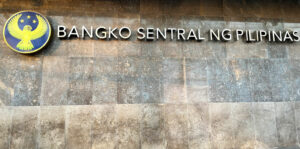BSP may cut RRR this year — Metrobank
THE BANGKO SENTRAL ng Pilipinas (BSP) could reduce local banks’ reserve requirement ratio (RRR) to as low as 7% this year, Metropolitan Bank & Trust Co. (Metrobank) said. “While we expect the central bank to continue cutting rates in the coming months, we believe BSP Governor Eli M. Remolona, Jr. is also planning to reduce […]

THE BANGKO SENTRAL ng Pilipinas (BSP) could reduce local banks’ reserve requirement ratio (RRR) to as low as 7% this year, Metropolitan Bank & Trust Co. (Metrobank) said.
“While we expect the central bank to continue cutting rates in the coming months, we believe BSP Governor Eli M. Remolona, Jr. is also planning to reduce banks’ reserve requirements, as he previously hinted,” Metrobank Chief Economist Nicholas Antonio T. Mapa said in a commentary.
“We think (Mr.) Remolona might lower (RRR) by 250 basis points (bps) or 2.5 percentage points before the end of the year, with the first reduction likely to happen soon.”
The RRR is the percentage of bank deposits and deposit substitute liabilities that banks cannot lend out and must set aside in deposits with the BSP.
In June last year, the BSP reduced the ratio for big banks and nonbank financial institutions with quasi-banking functions by 250 bps to 9.5%.
The central bank has brought down the RRR for universal and commercial banks to a single-digit level from a high of 20% in 2018.
“Since RR changes are not considered policy moves, we believe the upcoming RR reduction could happen on any Thursday (when the Monetary Board meets weekly),” Mr. Mapa said.
The BSP chief earlier said they are seeking to bring down the banks’ RRR to as low as 5%, but added the timing is yet to be decided.
“Adjustments to the RR were once considered a policy adjustment. However, with the advent of the BSP’s interest rate corridor system and its accompanying liquidity management facilities, any RR reduction has been relegated to a simple operational adjustment,” Mr. Mapa said.
The start of RRR cuts “may not necessarily be announced during the regular policy cycle,” he added.
“With the BSP in easing mode, we expect RR reductions to be announced shortly after the Fed policy meeting or perhaps after the Philippines’ September inflation data is released, which could show inflation drop to around 2.3%.”
The Federal Open Market Committee (FOMC) is having its meeting from Sept. 17-18.
Philippine headline inflation eased to 3.3% in August from a nine-month high of 4.4% in July, latest data from the local statistics authority showed.
The BSP earlier said it expects inflation to ease further from August onwards. It expects full-year inflation to settle at 3.4%.
“Now that the BSP is looking to bring down its borrowing costs from elevated levels to more normal and supportive levels, the time appears ripe for another round of RR reductions,” Mr. Mapa added.
Mr. Remolona earlier signaled the possibility of another 25-bp cut before the year ends.
The Monetary Board cut benchmark interest rates by 25 bps to 6.25% at its Aug. 15 meeting, the first rate reduction in nearly four years.
However, Mr. Mapa said that it is still uncertain if slashing the RRR while interest rates are still elevated would lead to higher bank lending.
“Banks that have more funds available for lending might choose to deposit this money back with the central bank, where they can earn attractive interest rates of about 6.25%.”
Metrobank expects the central bank to reduce the RRR by 150 bps first, followed by another 100-bp cut within the year.
“As such, should the BSP carry out a 150-bp RR reduction in the near term, banks may become attractive again in the near term. However, caution about its impact on bank lending and overall growth momentum is warranted.”
Data from the central bank showed that outstanding loans of universal and commercial banks rose by 10.4% year on year to P12.14 trillion. This was the fastest growth since 13.7% in December 2022. — Luisa Maria Jacinta C. Jocson
















